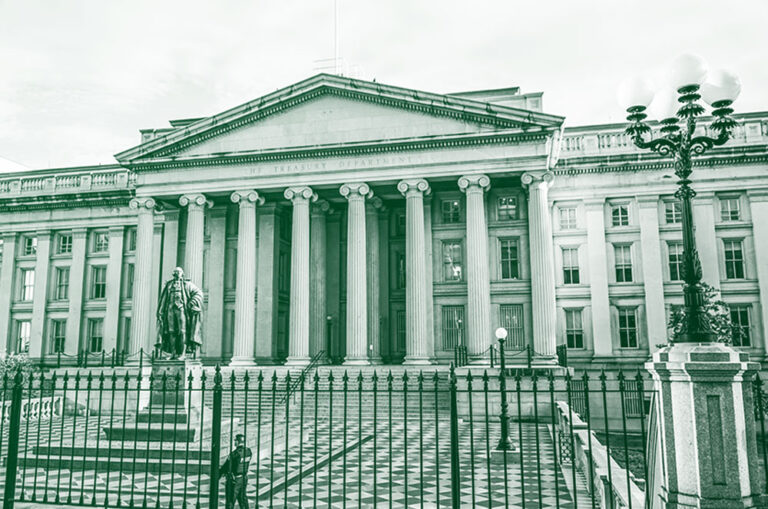
Andrew Canobi, a Director within the Franklin Templeton Fixed Income team in Melbourne, Australia, discusses what is causing the current selloff in US and Australian bond markets, and whether it can maintain its current trajectory or if we are heading for disaster.
The US 10-year treasury yield is the price of money for the world. This foundation for global markets looks like it has broken its moorings as the yield has soared 90bps since the start of September alone. At 4.98% it now sits at the highest yield since 2007 and tickling 5%.
Make no mistake interest rates are high and this savage move will tighten financial conditions materially over coming months, says Franklin Templeton Australian Fixed Income Portfolio Manager Andrew Canobi.
Canobi says: “If the US 10-year yield continues to sell off, as it has, markets crumble. Directly, as so much of global borrowings from corporates to households to emerging market sovereigns is linked to longer term US yields. Indirectly, as the 10-year yield largely directs where global bond yields travel. Australian 10-year yields are closely tracking as below. The US is setting tighter policy by the week for the world.”
Source: Franklin Templeton, Bloomberg
“When asked what is causing the selloff? We could point to:
- Runaway US fiscal deficits (~8% of GDP in Q3 23 and that’s in a period of strong growth!)
or - Lower demand from global investors (Japanese investors in US treasuries hedged to JPY are paying away return)
or - A hawkish Fed. But they’ve been hawkish all year and the end of FOMC tightening appears close
or - US retail fund outflows
or - The Fed shrinking its balance sheet sheet
Also read: Bonds versus Equities: Five Reasons to Buy Bonds
It’s probably all of the above and more that explain the latest bond meltdown. What we do know is that if the world’s interest rate doesn’t settle soon things break. Which could be a silver lining for the Fed eagerly looking for some bang for its monetary buck. The rise in long term bond yields has caught the eye of policy makers, which is good news if the market tightens the monetary screws for them.
“The sooner markets crumble under the weight of the monetary assault metered out over the last two years the sooner said assault can end. The clearest sign that the unhinged move in 10-year yields is getting people’s attention, is the equity market. After a surprising year where the S&P 500, and Nasdaq in particular, have been sustained by the frothy tech bubble stocks the fact that equities look like they might finally be getting the monetary memo could paradoxically be good news. For the US Federal Reserve, as much as they won’t admit it, stock prices are the third rail of monetary policy. For the last 18 months even as the Fed Funds rate has been elevated by 525bps equity markets have remained stubbornly strong.
“The S&P 500 and Nasdaq are off nearly 8% since its late July level. The equally weighted S&P 500 (removing the outsized impact of the bubble stocks) is off nearly 11%.
“The meltdown from US treasuries reverberates around the world as it always does. Australian yields follow US yields like a lemming over the cliff. Until US yields settle down everything goes with them.
“The surge higher in US yields means that the average rate on a US 30-yr mortgage is now an eye-popping 8% and the highest it’s been since 2000.
Source: Franklin Templeton, Bloomberg
“It’s any wonder no-one in America is moving home or applying for a new mortgage as pending home sales for existing homes languishes at -19% YoY.
“We don’t need to say much about the fiscal debt doom loop that the US Federal Government is careering towards. As a reminder, highly indebted nations can’t handle higher interest rates. US exceptionalism buys it time but that’s all. But in the long run US government debt is on a woefully unsustainable trajectory but, a bit like the boy who cried wolf, it’s not a crisis until it is. Consider that US Federal Government Debt has ballooned from US$27tr in 2020 to more than US$33tr today. The US Government is running a budget deficit of ~US$2tr in a context of near record low unemployment and still strong growth. Federal debt is up ~$604bn in one month and on an unchanged trajectory would be more than $40tr in a year. The current deficit is nearly 8% of GDP. When the US economy turns down this explodes if nothing changes. And at the risk of stating the obvious wars are extremely expensive. With the US already fighting a proxy war against Russia in the Ukraine theatre and now potentially at risk of engaging Iran and allies in the middle east the fiscal picture for the US is extremely weak.
“What makes the recent flash crash in bonds particularly dangerous for markets is it comes at a time when core inflation looks more and more on a better trajectory. So that means real yields or yields adjusted for inflation are leading the move higher Again, finding a simple explanation for this other than ‘who the heck wants to own treasuries’ is difficult. Real 10-year yields are at multi decade highs. Even on current spot inflation 10-year nominal bonds offer an inflation adjusted return let alone once inflation settles lower Real yields ultimately are what is making the equity and other markets sit up and take notice.
Source: Franklin Templeton, Bloomberg
“We think this recent flash crash in bond prices will be unnerving central bankers led by the Fed who are desperately trying to calibrate a slowdown without completely crashing the bus. At a minimum the scale of this move adds monetary tightening to the economy beyond that delivered. At worst if the collective investor class is shying away from US government debt at a time when the US treasury is showering the market with supply that’s a problem. It has always been our view that QE is a semi-permanent monetary tool. Maybe it might return sooner than we think.”




































